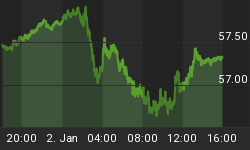The monthly European M2 numbers are out (they are released with approximately a one-month lag), and so we can get a look at the monetary conditions through the end of October.

The chart above (source: FRB and ECB) shows that whatever the ECB is claiming about not conducting QE, money supply growth is most definitely accelerating.
The data also allows me to update one of my current-favorite charts, showing the connection between developed markets money growth (proxied here by US M2 plus Euro M2) and core U.S. inflation. The chart is below (source: BLS, FRB, ECB, Enduring Investments calculations).

What is most amazing to me about this pretty reasonable (correlation= 0.6) relationship is that it is contemporaneous. This is really important, because what it means is that we can argue that money velocity may not actually have fallen in the U.S. as much as it is commonly believed to have. If the proper measure, now that all of our economies are so interconnected, is global money rather than narrowly domestic money, then one answer to the question "why did the 10% growth in the U.S. money supply not lead to much higher inflation, much higher real growth, or both" (the correlation between U.S. M2 growth and U.S. core inflation is only 0.44) could be "because Europe's tight money was counterbalancing our loose money."
If this speculation is right, then it makes the ubiquity of QE much more worrisome, because it means that even if the Fed stops throwing wood on the fire, if everyone else is doing so we may still see domestic inflation (although, in that case the dollar would likely strengthen appreciably, blunting that effect).
















